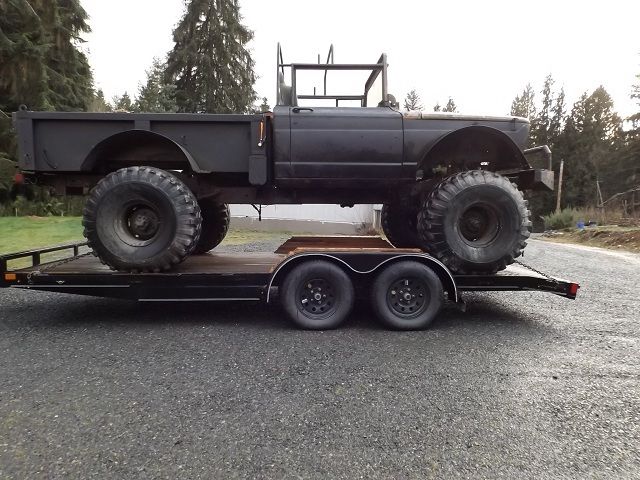I though I would move this project to the right forum. It was pretty cool to get the greetings from everyone. I was a regular about ten years ago. Sitting at my desk when I should have been working. I work from home now reproducing full size parts and now John Deere parts that are discontinued.
My last FSJ wagoneer build took 9 years and 10 months. It was a hoot, I learned priceless things. I had a really nice stock 68. Now I wanted a modified offroad rig to run the hundreds of miles of gravel where I live. Nothing serious offroad, just a nicely built machine that is fun.
I found my current rolling shell out of Arlington WA north of Seattle a ways.. Through word of mouth. Thanks Fisherman! It is a 1968 serial number 33479 with a delivery of 12/68 Yesterday getting a title transfer under way, I found it was titled in MA, PA, MN, SD, and WA here where I live. Interesting...
My plans are a buick 350 that I have here. A J truck modified (input and bellhousing) T-98 that I also have, a IH NP202 that will be here hopefully this summer, and a 96 rear Dana 70 Dodge rear end with a Powr-LOC. I also have a 83 Chev K30 front Dana 60 I just road tripped and brought home.
I have been up late reading. Any input is welcome. Plans change and I want to do this once.
The truck. It is very straight and a good place to start.
I will be doing some intensive firewall sheet metal restoration. Putting back original metal. You will not see the work when I am finished.
I have been reading on the Dana 60 front. I hope Barrman see's this. I saw a repair thread on SS from 2009 on a removal of under frame mounted spring hangers that caused poor handling. I think it was a truck that belonged to Sermis. I hope to hear more detail on this repair.
I am evaluating using the OEM chevy dana 60 axle spring mounts at 31.5 inches apart. The M715 frame center to center is the same. This is what Barrman undid on the M715 he and his class repaired. I am curious if it was just not set up correctly with proper alignment? I hope he chimes in on this.
Currently the M715 frame hangers make a leaf spring C to C that would require new spring pads on the front housing. I wanted a slightly longer leaf spring if possible. Stock is 43 inches, the K30 4 leaf HD flat springs are 47 inches long. My plow truck has them. I also need to loose some lift. The flat Chev springs would be about right for a spring over over the arched stock spring that are under the truck. It would also be a rear shackle set up
Now my imagined way of setting up a front axle is find the K30 specs and set the axle to that on jack stands. Mate the suspension to the truck keeping those dimensions. If it is possible without goofy frame hangers.
Stock 83 K30 caster is 8* degrees, camber is 1/2 prefered, with 3/16 minimum, 1 3/16 max. toe in 3/16 I would hope the pinion would be the desired 2* up. I hope I don't have to rotate the C's. I am not that dedicated anymore... I realize modified spring pads are easier than frame mods. I still sort of wanted slightly longer springs. Not cemented in stone yet.
The rear Dodge Dana 70 is a slam dunk. Weld on new spring pads at the M715 spring dimensions and just set the pinion angle right. I need to get the truck off the trailer today. And get the axles stored somewhere with some moderate weather protection.
This is a start for now. There will be more. A lot more.








 Reply With Quote
Reply With Quote











